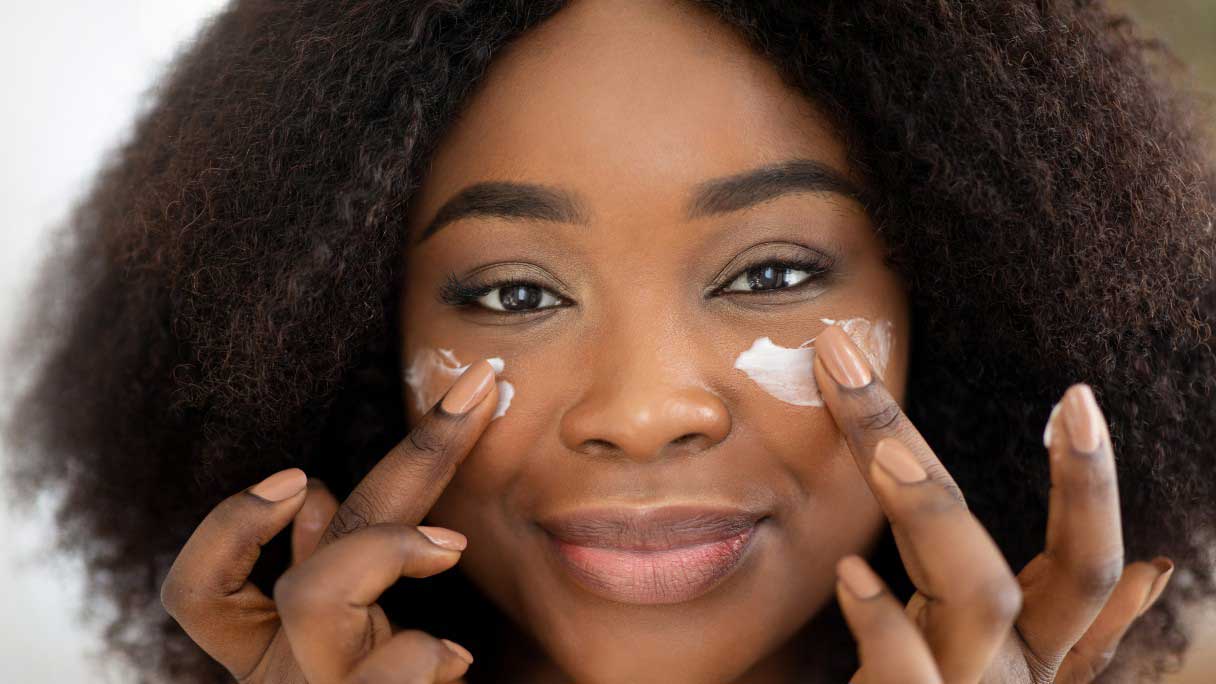Improving your look with facial fillers is a popular way to safely combat some of the effects of aging, but it can be a challenge knowing where to start. With more than three million people using dermal fillers in the U.S. every year, it's certainly a popular cosmetic choice.1 But how do you know if it will work for you?
Choosing the right filler can make a big difference in ensuring you achieve optimal results. This guide will walk you through the most popular fillers and how they work.
What Are Facial Fillers?
Facial fillers are small amounts of gel substances that are injected into your skin, giving a more youthful appearance.2 Your body loses collagen as you age, and facial fillers help counteract this.1 They plump the skin, adding volume that was lost and helping smooth facial wrinkles.1 They're typically injected in the cheeks, mouth, jawline, around the eye or even in the lips as lip fillers.2
Read Related: Dermal Fillers 101: Types, Uses, Costs, Risks and More
Different Types of Facial Fillers
There are numerous types of facial fillers to choose from. Here are some of the more popular types.
1. Hyaluronic acid fillers
This filler's active ingredient is hyaluronic acid (HA), a substance naturally produced by the body that helps keep skin looking plump.1 Technically, the gel is synthetic, but it's almost identical to what your body makes naturally.3
Hyaluronic acid fillers are designed to fill in wrinkles and help smooth acne or surgery scars.3 These treatments are often used to fill in those small “worry lines" between the eyebrows, sometimes in conjunction with Botox Cosmetic®. However, it's important to note that each brand of HA filler works a bit differently and can bring distinct results.4
In general, results can last six months to a year or more, depending on the brand.1 Repeated treatments might stimulate your own natural collagen production, possibly leading to needing less filler over time.4
Some of the most popular hyaluronic acid filler brands include:
- Juvederm®: This brand has different formulas, depending on the area of the face being targeted.3 It lasts 12 to 16 months, and is reversible. Lip filler versions tend to be shorter-lasting.
- Restylane®: While also utilizing HA, this brand focuses more on hydrating the skin to improve smoothness and appearance.3 It's typically used on the jawline, back of the hands, lower cheeks or upper neck. Results can last up to six months, but it's often a three-step treatment.
- Revanesse® Versa: This brand has less risk of post-injection swelling, which can help make correction more precise.5
- RHA® collection: This comes in three versions: RHA 2, RHA 3 and RHA 4.6 The brand is great for dynamic facial wrinkles that move with your natural expressions. Some versions are ideal for nasolabial folds, "elevens," crow's feet, jawlines and more, depending on the thickness.
- Belotero®+: This brand is good for nasolabial folds and wrinkles around the lips and mouth. It feels more natural than some fillers and helps maintain normal movement.5
2. Calcium hydroxylapatite fillers
Calcium hydroxylapatite (CaHA) fillers are made from a mineral typically found in your bones or teeth.5 The gel has calcium-based beads that plump the skin at first, but later stimulate collagen production.3 These are often best suited for treating deeper wrinkles.1 Results can last 12 to 18 months.3
An upside to CaHA fillers is that they are biosynthetically made without any animal products. This means you're less likely to have an allergic reaction to them.5 A downside to these fillers is that if you need an X-ray, the calcium will show up on it and might obscure the scan.7 Some brands, because of the beads, shouldn't be used on thinner parts of the skin.3
Radiesse® is the only FDA-approved CaHA filler,6 and while it can provide quick results,5 they can't be immediately reversed and must be allowed to fade on their own.3
3. Poly-L-lactic acid fillers
Poly-L-lactic acid (PLLA) fillers are made of a substance also used in absorbable stitches or bone screws.7 The gel encourages your body to create its own collagen.3 These fillers are often used for deeper facial wrinkles.1
Results with PLLA fillers can last as long as two years or more,1 but it can take several treatments over the course of a few months to see results.3
Sculptra® is the only FDA-approved PLLA brand filler.6 The results aren't reversible.3
4. Polymethylmethacrylate fillers
Polymethylmethacrylate (PMMA) fillers use tiny PMMA balls in a bovine collagen solution.8 The balls stay under your skin, helping maintain volume and firmness.1 This is the only filler that isn't absorbed into your body.8
Bellafill® is the only FDA-approved PMMA filler.6 It's typically used for deep wrinkles or to fill pitted scars.
A downside to Bellafill is that there are some reports of nodules (also called granulomas) occurring years later.9 Some doctors say granuloma rates with Bellafill are low and easily treated.10 Others, however, say nodule risks are higher with permanent fillers like Bellafill and can be tough to treat.9 If concerned, ask your doctor what is best for you.
5. Autologous fat grafting
Some people may consider this a type of dermal filler, but it differs quite a bit from the procedures listed above. This involves removing fat from your own body via liposuction, purifying it and injecting it as a filler into your face.1 This is an outpatient procedure, but it takes longer than regular facial fillers and may require two weeks of rest and recovery after.
6. Platelet-rich plasma (PRP) therapy
This is another type of filler that is very different from the most popular brands. With PRP, doctors put your own blood in a centrifuge, separating the platelets and then injecting them.3 The idea is that it will trigger collagen growth. Results can last up to a year, but it may take several treatments (and two to six weeks) to see results.3
7. Other fillers
There are other fillers you may have heard of that either aren't available in the U.S. or aren't frequently used. Here are some examples:
- Polycaprolactone (PCL) fillers (brand name Ellansé™) help stimulate collagen production, which can lead to longer-lasting results.2 These fillers are made of PCL microspheres suspended in a carboxymethyl cellulose gel.11 The gel initially increases the volume, and the PCL microspheres help induce collagen products. Results can last two years. The product is used by doctors in Europe and Asia.12
- Profhilo® is a newer formulation of HA fillers known as a skin booster.13 It focuses more on enhancing glow, smoothing and tightening, rather than adding significant volume. It's widely used in Europe, but not yet available in the U.S.
8. Non-FDA-approved fillers
The FDA has warned consumers against a few types of fillers that aren't approved and should be avoided. These include:8
- Silicone fillers
- Fillers injected with needle-free devices. This can lead to serious or permanent injuries.
- Fillers for large-scale body contouring. This can lead to disfigurement or even death.
- Fillers sold directly to the public rather than used by a licensed professional
Average Cost of Facial Fillers
The cost of facial fillers varies depending on which brand you choose, how much you get done and your doctor and location.2 The average prices are:6
| Type of filler | Cost |
|---|---|
| HA fillers | $550 to $850 per syringe |
| CaHA fillers | $550 to $750 per syringe |
| PLLA fillers | $900 per vial (with two to three vials used per session) |
| PMMA fillers | $1,000 per syringe |
With so many available options, it can be tough to know which facial filler is right for you. A cosmetic surgeon or dermatologist can help you make that decision. Pick a doctor who is board-certified and has extensive experience in the dermal fillers you're most interested in.
Read Related: Prepping for Plastic Surgery: How To Research and What To Ask
You might also want to talk to friends who've had similar filler treatments to get their input. Putting in the time and research is definitely worthwhile when you're investing in a cosmetic procedure that you can enjoy for months and even years to come.
Financing Dermal Fillers With The CareCredit Credit Card
When getting dermal fillers or another cosmetic procedure, the CareCredit credit card can help you pay for costs not covered by insurance.* Apply today and use our Acceptance Locator to find a doctor or cosmetic specialist near you that accepts CareCredit. Continue your wellness journey by downloading the CareCredit Mobile App to manage your CareCredit account, find a provider on the go, and easily access the Well U hub for more great articles, podcasts and videos.
Author Bio
Stephanie Dwilson specializes in science journalism, breaking news, and animal health and is a business owner, non-practicing attorney and writer.











